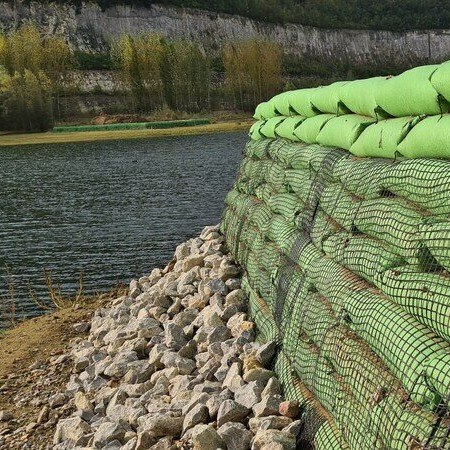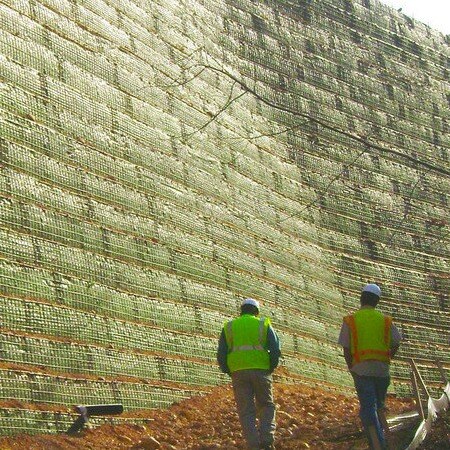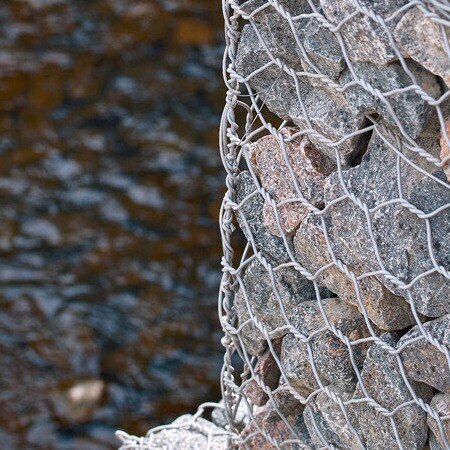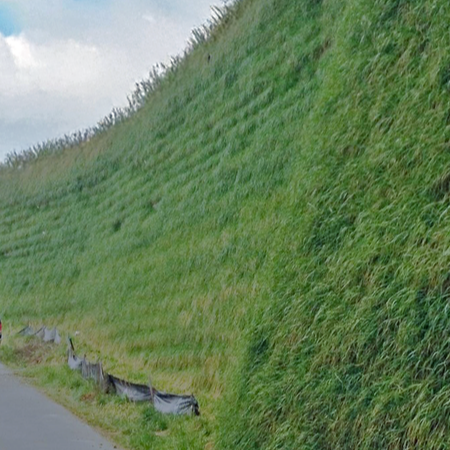Water management
Water management
Effective water management is crucial for controlling surface water, reducing flood risks, and maintaining environmental sustainability.
Poor water management can result in erosion, pollution, and damage to infrastructure. Traditional drainage systems, such as culverts and concrete channels, are effective at directing water but often fail to support long-term ecological health. Sustainable solutions aim to slow, filter, and absorb water naturally while reducing the burden on drainage networks.
Techniques such as Sustainable Drainage Systems (SuDS) and vegetated attenuation ponds help manage water in a way that mimics natural processes. Rootlok’s vegetated walls and rain gardens are examples of eco-friendly solutions that enhance infiltration, reduce surface runoff, and improve water quality. By integrating green infrastructure into water management strategies, these solutions not only mitigate flooding but also promote biodiversity and improve landscape resilience.
In addition to traditional water management strategies, reinforced earth structures also play a key role in improving water flow and reducing flood risks. The integration of geogrids, geoslope systems, and geomesh in these structures enhances soil stability, allowing for better water infiltration and drainage.
Similarly, the use of gabions and gabion mattresses—wire mesh baskets filled with rocks—offers additional reinforcement, providing effective erosion control and stabilisation in areas with high water flow. These systems help prevent water accumulation behind walls by reducing hydrostatic pressure, which is a common cause of structural failure.
The flexibility of reinforced earth allows it to adapt to shifting water patterns, providing more effective long-term solutions in areas prone to heavy rainfall or flooding. Furthermore, when combined with vegetated facings, like those used in Rootlok, these systems further enhance water absorption, filter pollutants, and help reduce the impact of stormwater runoff on surrounding ecosystems.
- Water engineering
- SuDS (Sustainable Drainage Systems)
- Riverbanks
- Streams
- Flood bunds
- Headwalls
- Attenuation pond walls
Benefits
 Improved absorption
Improved absorption
Reinforced earth structures enhance water absorption, preventing water pooling and promoting better infiltration.
 Reduced flood risk
Reduced flood risk
These systems manage water flow and reduce surface runoff, helping mitigate flood risks in flood-prone areas.
 Erosion control
Erosion control
Geosynthetics in reinforced earth structures stabilise soil and prevent erosion caused by water runoff.

Eco-friendly
Green infrastructure filters pollutants and reduces the load on drainage systems.

Enhanced durability
Reinforced earth structures reduce hydrostatic pressure, improving the longevity and stability of water management systems.








